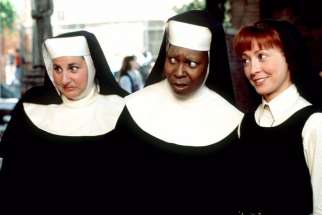Speaking Out: The gift that was Sr. Mary Clarence
I often sit in on St. Michael’s Choir School Concerts and Music Ministries listening to the Baroque, Gregorian and Renaissance pieces accompanied by a loud organ, thinking about what kind of people enjoy this type of music.
Finding a balance between liturgy and performance in music ministry
TORONTO - Those involved with the music ministry at their parish are often faced with a difficulty that comes from the intrinsic duality of their role — how to maintain a balance between the performance aspect of their craft and the importance of being liturgically sound and engaged with your community.
Fr. Ricky Manalo, CSP, is a highly regarded liturgical musician, Paulist priest, teacher and composer. He will be in Toronto Nov. 3 to host an all-day interactive session, “Sing to the Lord: Liturgical Music in Today’s Church,” at downtown Toronto’s St. Peter’s Church examining the dual role.
“The first part of my talk will be focused not on music and not on any pastoral suggestions, but more on the deeper, ecclesial identity of the Church,” said Manalo. “In other words, how do we ground ourselves to first understanding that when we celebrate liturgy it’s a celebration of the whole community.
“From there we can go into some official documents, particularly what emerged out of the second Vatican Council, that called for more full, conscious and active participation.”
Manalo, whose 2007 hymn “That All May Be One in Christ” won the national hymn competition sponsored by the National Association of Pastoral Musicians in the United States, feels that the skills and talents of ministers can be used as a way to promote participation during the Mass.
“When I studied as a musician at the Manhattan School of Music, the goal there was art for the sake of art: musica pro musica. Whereas, in liturgy, it’s not art for the sake of art itself, but for the worship of God. All things should point to that,” said Manalo.
“This also doesn’t mean that they should pay less attention to the performative skills that they have already; that’s also important. But, it’s a difference between a liturgy and, say, performing in Carnegie Hall,” he laughs.
Manalo also points to the challenges that come from our secular society, in that we are awash with myriad musical styles and cultural influences. However, these challenges may also yield favourable results.
“The liturgical theologian Anthony Ruff has pointed out that even during the Baroque era, a lot of the musical styles that were sung and/or performed during Mass came from secular styles that were occurring outside of the Church,” said Manalo.
“There will always be various musical styles — whether they be a particular culture, a traditional repertoire that Catholics hold dear or whether they be styles that come from Africa or a generational culture group. What followed after Vatican II was an openness towards various musical styles.”
For more information on Sing to the Lord: Liturgical Music in Today’s Church, contact sbossi@ paulist.org (tickets are $30).



